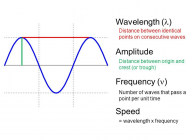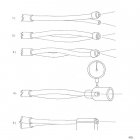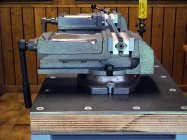One thing your last drawing oversimplifies is amplitude, with and without a tuner. Physics will tell us that amplitude is reduced by adding a mass to the end of the barrel. Interestingly, for the very short period while the bullet is still in the barrel, this was not the case in my testing. Initial amplitude was actually INCREASED but it quickly dissipates to a lower amplitude than without a tuner.
If you think about it, it makes sense because the barrel is already deflecting downward more with the weight, than without it, even before the trigger is pulled. This is why a typical, even undamped tuner will widen the node beyond simply lowering the frequency of vibration. I found this an interesting point from testing. In simple terms, the barrel spends more time at top and bottom.
If you think about it, it makes sense because the barrel is already deflecting downward more with the weight, than without it, even before the trigger is pulled. This is why a typical, even undamped tuner will widen the node beyond simply lowering the frequency of vibration. I found this an interesting point from testing. In simple terms, the barrel spends more time at top and bottom.













